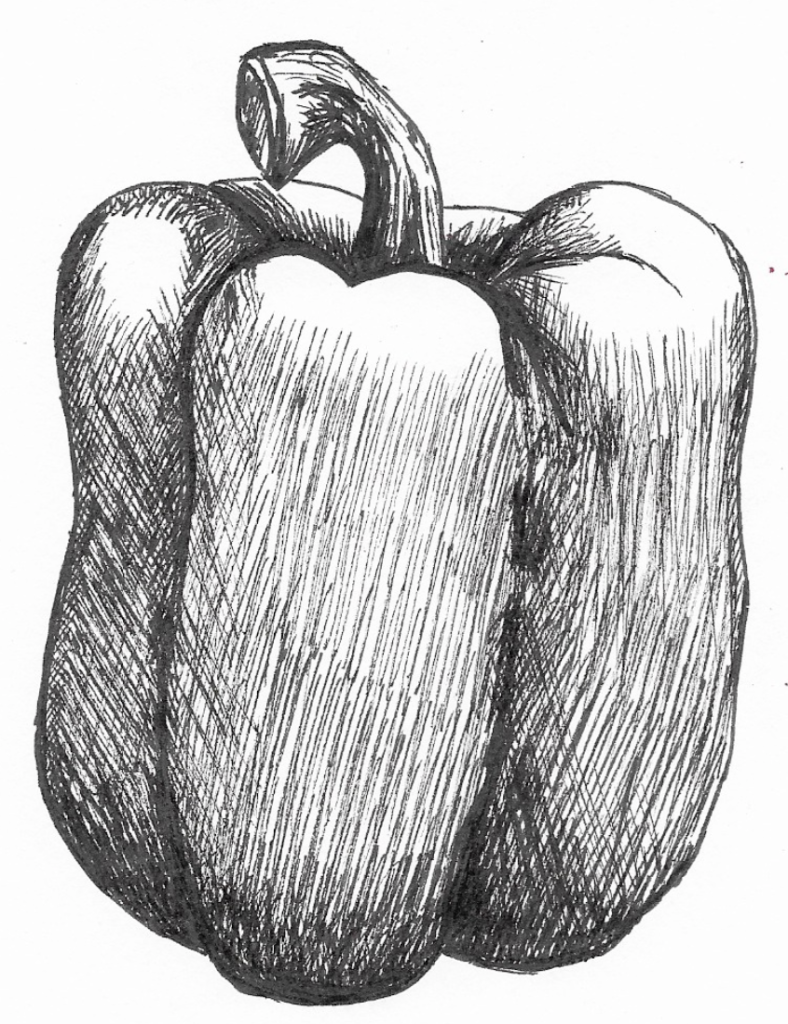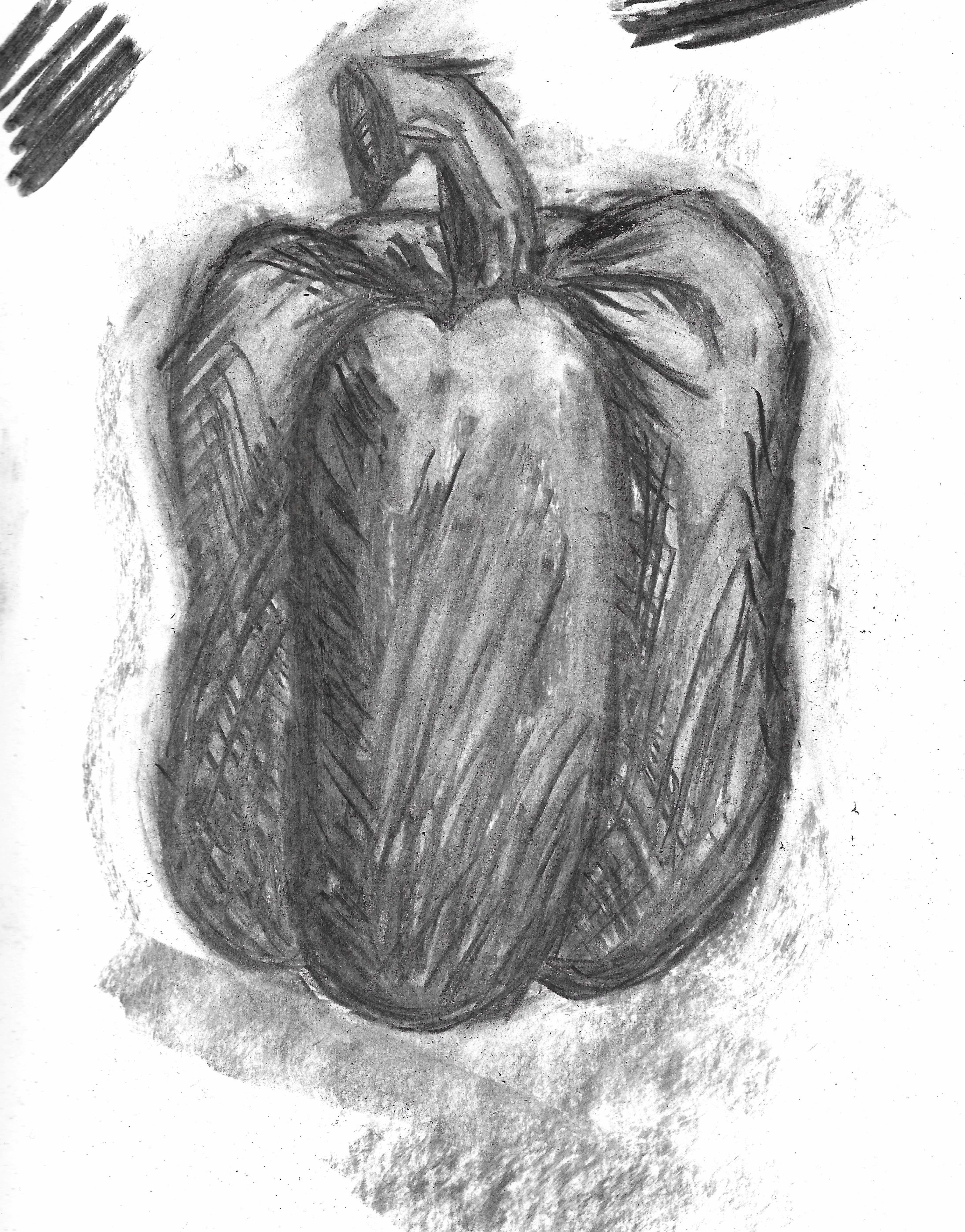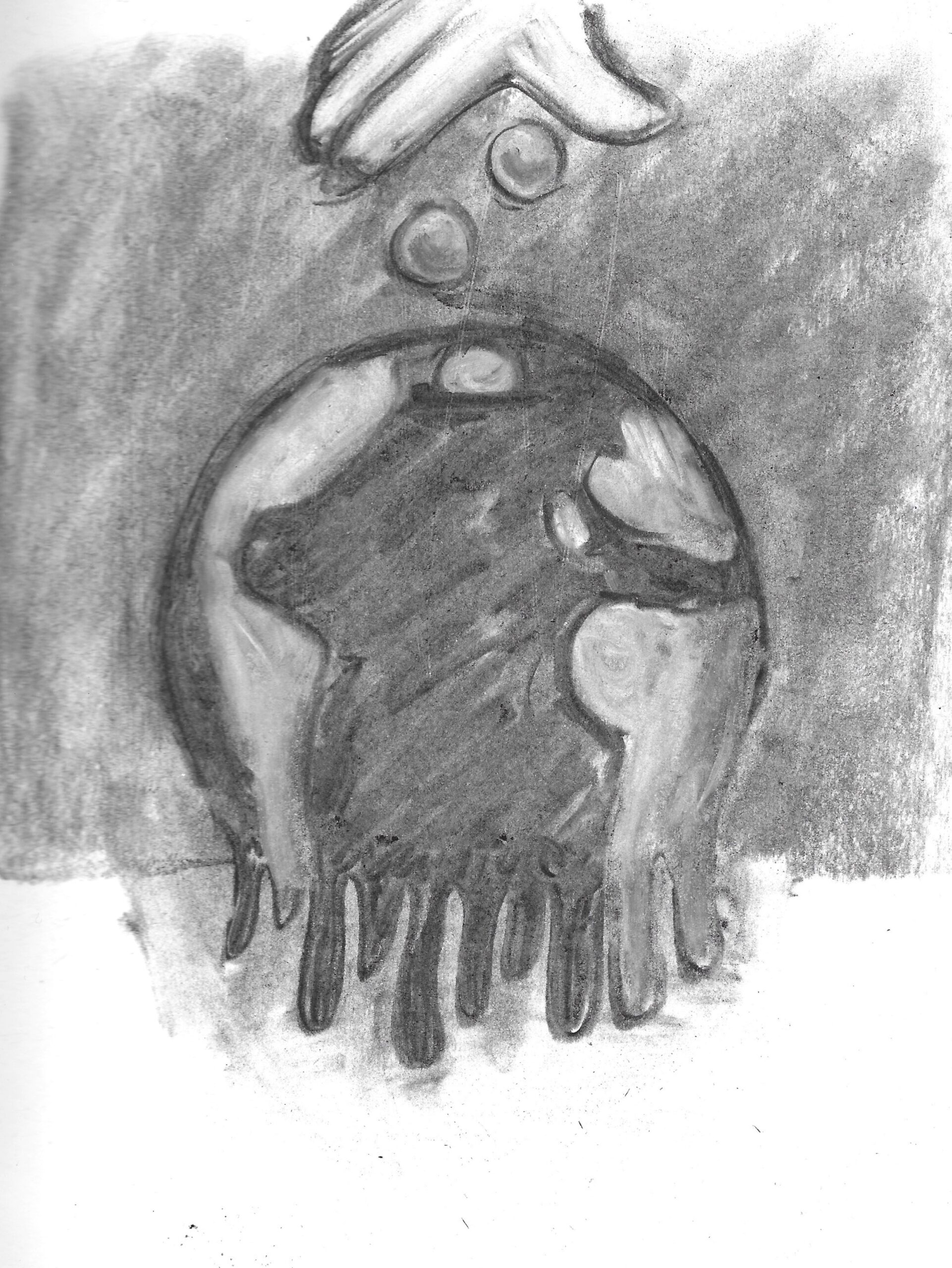Brief
Find a range of illustrators who use a particular medium. You may focus on the traditional such as pencil, watercolour, paint, gouache, coloured pencils, oil or acrylic paint, college, print or on the more obvious digital processes – including digital collage, photography, digital drawing or painting.
Catalogue the illustrators according to similarities in the way they use tools and materials. How do they distort or exaggerate the representation of elements in their work? How do they communicate through use of metaphor ir symbols?
Choose one image which you most appreciate visually. Write about the way the illustrator works. It often helps to begin by describing a picture. Ask yourself questions as you write such as: How is the image composed? How are colour, tone, and texture used to evoke mood or convey an idea? Has the illustrator distorted the content within the imagery and how does this work for the purpose the image fulfils?
Go back to a visual you created for an earlier exercise and now render it using the same tools and materials as your chosen artist.
Now choose a very different artwork and repeat the process.
Initial Research
I decided to look to artists/illustrators who use charcoal as a medium. I began by creating a pinterest board of examples, so I could get an overall impression of the different styles available using charcoal as a tool. I found that charcoal is a very versatile medium and can be applied in many ways, e.g. varying the pressure to increase/decrease the intensity of the darkness and then worked back into, e.g. using a finger to smooth out areas or an eraser to add highlights. Charcoal is a good choice for gestural drawings of people and animals.
Artists/Illustrators
I struggled to narrow the categories down for such a wide range of both contemporary and historical artists, but in the end decided to use the following four: Realistic, Expressive, Abstract and Simplified. These were my terms for the artwork and I was not necessarily referring to a particular art movement.
Realistic
The works by these artists/illustrators range from photo-realistic to stylised-realistic, but all are careful studies and appear to have been considered in the application of charcoal (when compared to my Expressive choices, below). Several of the artworks I thought were black and white photographs rather than drawings. However, my favourite from this selection was Aron Wiesenfeld as I liked the style and atmosphere of his illustrations. He has used charcoal to create soft contrasts and adds fine detail to the main focus of the artwork.
Expressive
I thought the work by the below artists/illustrators, although recognisable in terms of what was being depicted, were more expressive in the strokes. I felt that the way the charcoal has been applied adds a sense of urgency and emotion to the drawings. The lines do not feel static. My favourite from this selection was Dennis Creffield as I was really impressed how he used what appears to be hastily applied series of lines/areas of charcoal and still managed to depict recognisable representations of buildings. I thought he must have used the side of a charcoal stick to fill out the main structure of the building and then worked back into it with strokes of the point of the charcoal.
Abstract
These artists/illustrators have mostly used charcoal in large sweeps and then worked back into it, e.g by using an eraser or varied the amount of coverage of charcoal.
Simplified
The artists/illustrators have used line and tone to suggest ‘simplified’ figures. Roberts, Bomberg and Vaughn all seem to have been influenced by Cubism. I particularly liked Suzy Lee’s illustration. She has used the side of a stick of charcoal and varied the pressure to create blocks, which she has worked back into with the fine point for the details. I thought she had managed to depict great deal of character in a very simple way.
Chosen Image
I decided to select Dennis Creffield’s Durham: The Central Tower (1987) as the image I appreciated the most visually. As previously stated, the image has been composed by using the side of a stick of charcoal to block out the main areas of the building and then working back into this with a series of gestural, straight lines to add more details of the building’s structure. An eraser appears to have also been used to select some highlights within the image. The drawing has a great deal of energy and I thought it was an interesting technique as I tend to associate this style of hastily applied marks with figure drawing where the subject is in motion rather than a static building. The drawing gives the impression it is capturing a moment in time.
Visual One
For the first attempt at re-rendering on of my visuals in the style of Dennis Creffield’s cathedral, I chose the red pepper visual I did for Assignment 2: Point of Sale Display.


I thought this was fairly successful in recreating the style of Dennis Creffield using charcoal, but I was quite disappointed that it did not turn out better. I tried to use a series of strokes for the outline/shadows on top of a blocked out area of charcoal.
Visual Two
My second choice was the Planet Earth design I did for the Part 1 Exercise 2: Getting the Gist, which was originally created digitally in Illustrator.


I did not think the technique was suited to this design at all. I could not find a way to recreate the strokes as in Creffield’s work with this illustration.
Conclusion
I found it very valuable researching various artists/illustrators who use charcoal and discovering that there are so many different ways of applying the medium. I decided that the style/technique that I had chosen was not well-suited to any of the visuals I have previously created. I felt it was best applied in the way that Creffield had done – for buildings where a series of straight lines can be applied to depict the structure.
As previously stated, I also thought it could be applied in the case of figure drawing, for example, but definitely not in examples such as my Planet Earth. However, it would have been interesting to look at some of the other artist on my list and see if any of their techniques would have been better suited.
References
Aron Wiesenfeld, (n.d.). About – Aron Wiesenfeld. [online] Available at: https://www.aronwiesenfeld.com/about [Accessed 02 October 2020].
Arts Council Collection, (n.d.). Sleeping Mother and Child. [online] Available at: http://www.artscouncilcollection.org.uk/artwork/sleeping-mother-and-child [Accessed 02 October 2020].
Cowling & Wilcox, (2020). Top 5 Charcoal Artists – Cowling & Wilcox Blog. [online] Available at: https://www.cowlingandwilcox.com/blog/2020/05/28/top-5-charcoal-artists/ [Accessed 01 October 2020].
Dan Pyle, Artist, (n.d.). Dan Pyle, Artist. [online] Available at: http://www.danpyleartist.com [Accessed 02 October 2020].
Dennis Creffield, (n.d.). Drawings | Dennis Creffield. [online] Available at: https://denniscreffield.org/works/cathedrals/drawings [Accessed 02 October 2020].
Henri Matisse, (n.d.). Selected Drawings and Graphic Work by Henri Matisse. [online] Available at: http://www.henri-matisse.net/drawings.html [Accessed 02 October 2020].
Instagram, (2020). Aron Wiesenfeld. [online] Available at: https://www.instagram.com/aronwiesenfeld/ [Accessed 02 October 2020].
Louis Smith Art, (n.d.). Charcoal Portraits. [online] Available at: https://www.louissmithart.com/art-gallery/charcoal-portraits/ [Accessed 02 October 2020].
Rise Art, (n.d.). Anna Sofie Jespersen, Artist. [online] Available at: https://www.riseart.com/artist/62266/annasofiejespersen [Accessed 02 October 2020].
Rise Art, (n.d.). ATC Series No 19 Large format charcoal drawing by Renata Fernandez. [online] Available at: https://www.riseart.com/art/93969/atc-series-no-19-large-format-charcoal-drawing-by-renata-fernandez [Accessed 02 October 2020].
Rise Art, (n.d.). Bound by Love by Elizabeth Waggett. [online] Available at: https://www.riseart.com/art/97705/bound-by-love-by-elizabeth-waggett [Accessed 02 October 2020].
Rise Art, (n.d.). Double Thought D-05 by Tehos Frederic Camilleri. [online] Available at: https://www.riseart.com/art/99671/double-thought-d-05-by-tehos-frederic-camilleri [Accessed 02 October 2020].
Rise Art, (n.d.). Draft by Nigel Bird. [online] Available at: https://www.riseart.com/art/97404/draft-by-nigel-bird [Accessed 02 October 2020].
Rise Art, (n.d.). Figure D 06 by Zin Lim. [online] Available at: https://www.riseart.com/art/65665/figure-d-06-by-zin-lim [Accessed 02 October 2020].
Saatchi Art, (n.d.). The Missing Piece – Passover Drawing by Andreea Anghel. [online] Available at: https://www.saatchiart.com/art/Drawing-The-Missing-Piece-Passover/297754/1411428/view [Accessed 02 October 2020].
Suzy Lee Books, (n.d.). River, Korean Edition. [online] Available at: http://www.suzyleebooks.com/zeroboard/zboard.php?id=misc&page=1&sn1=&divpage=1&sn=off&ss=on&sc=on&select_arrange=headnum&desc=asc&no=195&PHPSESSID=7e9e106bd8d19bbf6210cb92cb0c698c [Accessed 02 October 2020].
Tate, (n.d.). ‘A Bantam Hercules’, Eric Kennington, 1917. [online] Available at: https://www.tate.org.uk/art/artworks/kennington-a-bantam-hercules-n03552 [Accessed 02 October 2020].
Tate, (n.d.). ‘By the sea’, William Roberts, c.1925. [online] Available at: https://www.tate.org.uk/art/artworks/roberts-by-the-sea-t12671 [Accessed 02 October 2020].
Tate, (n.d.). Charcoal – Art Term. [online] Available at: https://www.tate.org.uk/art/art-terms/c/charcoal [Accessed 02 October 2020].
Tate, (n.d.). ‘Crowned Torso’, Stephen Cox, 1988. [online] Available at: https://www.tate.org.uk/art/artworks/cox-crowned-torso-t05510 [Accessed 02 October 2020].
Tate, (n.d.). ‘Durham: The Central Tower’, Dennis Creffield, 1987. [online] Available at: https://www.tate.org.uk/art/artworks/creffield-durham-the-central-tower-t05753 [Accessed 02 October 2020].
Tate, (n.d.). ‘Night Sky #19’, Vija Celmins, 1998. [online] Available at: https://www.tate.org.uk/art/artworks/celmins-night-sky-19-ar00163 [Accessed 02 October 2020].
Tate, (n.d.). ‘Reclining Nude’, Henri Matisse, 1924. [online] Available at: https://www.tate.org.uk/art/artworks/matisse-reclining-nude-t05756 [Accessed 02 October 2020].
Tate, (n.d.). ‘Self-Portrait. Verso: Untitled (Two Figures)’, Leon Kossoff, 1967. [online] Available at: https://www.tate.org.uk/art/artworks/kossoff-self-portrait-verso-untitled-two-figures-t04855 [Accessed 02 October 2020].
Tate, (n.d.). ‘Study for ‘In the Hold”, David Bomberg, c.1914. [online] Available at: https://www.tate.org.uk/art/artworks/bomberg-study-for-in-the-hold-t00914 [Accessed 02 October 2020].
Tate, (n.d.). ‘Untitled Drawing’, Nigel Hall, 1973. [online] Available at: https://www.tate.org.uk/art/artworks/hall-untitled-drawing-t01845 [Accessed 02 October 2020].
Tate, (n.d.). ‘Untitled (Male Figure)’, Keith Vaughn, c.1970. [online] Available at: https://www.tate.org.uk/art/artworks/vaughan-untitled-male-figure-t05704 [Accessed 02 October 2020].
Wikipedia, (n.d.). Charcoal art. [online] Available at: https://en.wikipedia.org/wiki/Charcoal_%28art%29 [Accessed 01 October 2020].
Wikipedia, (n.d.). Dan Pyle. [online] Available at: https://en.wikipedia.org/wiki/Dan_Pyle [Accessed 01 October 2020].